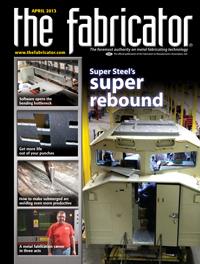by Tadman
If you're curious about the history of Super Steel and/or the passenger locomotive biz, here's a good article. It explains why Super Steel went under and why they left the passenger business but are avidly pursuing sub-contract work for EMD.
http://www.thefabricator.com/article/fa ... fabricator
"Super Steel owns an empty 180,000-sq.-ft. plant in Milwaukee. A for-sale sign hangs on the gate. This could be seen as a remnant of the overleveraged, pre-financial-crisis era. The fabricator exited receivership several years ago. The financial crisis forced the company to downsize significantly, from a head count high of 650 in 2008 to only 185 in the beginning of 2010.
But then you look at its bustling main facility a few miles away, all 450,000 sq. ft. of it. Today this plant alone has the capabilities to generate more than double the revenue produced previously from three facilities—two in Milwaukee and one in Glenville, N.Y., near Schenectady. In the months and years since the financial crisis, the organization has transformed.
Super Steel went back to its roots of quick-turn contract fabrication and successfully balanced it with its product line work for the freight rail industry. In short, the company found the right mix of people and work to grow. Managers expect revenues to reach $70 million by the end of 2013."
Super Steel is the name behind the turboliner rebuilds and the DE/DM30 fleet, as well as the manufacturer of most SD70 cabs.

http://www.thefabricator.com/article/fa ... fabricator
"Super Steel owns an empty 180,000-sq.-ft. plant in Milwaukee. A for-sale sign hangs on the gate. This could be seen as a remnant of the overleveraged, pre-financial-crisis era. The fabricator exited receivership several years ago. The financial crisis forced the company to downsize significantly, from a head count high of 650 in 2008 to only 185 in the beginning of 2010.
But then you look at its bustling main facility a few miles away, all 450,000 sq. ft. of it. Today this plant alone has the capabilities to generate more than double the revenue produced previously from three facilities—two in Milwaukee and one in Glenville, N.Y., near Schenectady. In the months and years since the financial crisis, the organization has transformed.
Super Steel went back to its roots of quick-turn contract fabrication and successfully balanced it with its product line work for the freight rail industry. In short, the company found the right mix of people and work to grow. Managers expect revenues to reach $70 million by the end of 2013."
Super Steel is the name behind the turboliner rebuilds and the DE/DM30 fleet, as well as the manufacturer of most SD70 cabs.

The new Acela: It's not Aveliable.